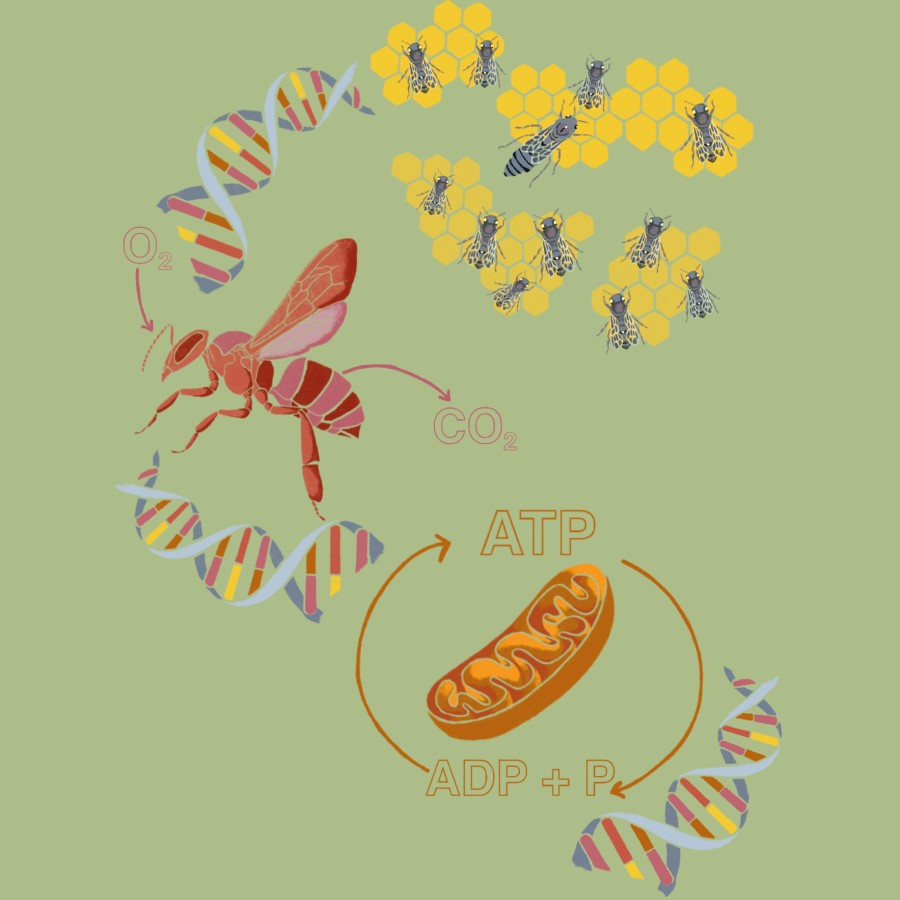The latest issue of Philosophical Transactions B delves into the evolutionary significance of variation in metabolic rates, exploring its role in shaping individual traits, influencing population dynamics, and adapting to changing environments. In this blog post, Guest Editor Dr Amanda Pettersen highlights the latest research exploring knowledge gaps on this topic.

Metabolic rate encompasses the processes underlying energy turnover common to all organisms. All animals must convert energy from food to chemical energy (adenosine triphosphate, ATP) to fuel the cost of living, including maintenance, development, growth, activity, and reproduction, hence metabolic rate is perhaps the most well studied and intensively measured physiological trait. Metabolism is traditionally measured as individual oxygen production or carbon dioxide production, and it can be measured at the primary site of this activity – the mitochondria, or more commonly, at the level of the individual, and even at population, and community levels. Resting metabolism can vary up to three-fold among individuals with equivalent body mass, age, sex, body temperature, and activity level. Similar intraspecific variation is observed in maximal metabolic rate and aerobic scope. If metabolic rate variation has a genetic basis, then selection on metabolism can lead to evolutionary change, with consequences for the persistence of populations under the increasing energy demands of environmental change.
The purpose of this Philosophical Transactions B theme issue is to provide physiologists and ecologists with insights into the importance of metabolic rate variation as a target of natural selection (i.e., from an evolutionary perspective). The issue covers a range of approaches, spanning different scales of organisation from genes and cells to individuals, populations, and communities, encompassing various study systems, including aquatic and terrestrial environments.
Metabolic rate: a hub trait
Metabolism is a ‘hub-trait’, affected by body size and temperature, but also many other intrinsic and extrinsic factors, including cell size, activity level, life-history stage, and resource demands. While metabolic rates are intricately linked to an organism’s biology, behaviour, and environment, the interplay between these factors is complex and often context dependent, as reviewed in this issue.
Variation in metabolic rates and the “pace-of-life” spectrum
Metabolic rates are not uniform across species or individuals. Instead, they often correlate with various physiological, life history, and behavioural traits, collectively forming a "pace-of-life" spectrum. A higher minimal metabolic rate may indicate a faster pace-of-life but a higher cost of living, leading to lower energetic efficiency. In this issue, metabolism is repeatable at the scale of mitochondrial respiration and efficiency. Individuals also show a consistent thermal sensitivity of their metabolism and high metabolic and growth rate individuals also show the highest thermal sensitivity of these traits. Yet, parents can alter the thermal sensitivity of their offspring metabolism to enhance survival under high temperature and low food regimes.
The evolutionary puzzle of metabolic rate variation
An understanding of the evolution of metabolic rates underlying the pace of life requires investigation into their genetic basis. Even in the presence of phenotypic correlation, selection on metabolic rates only results in indirect selection on other traits when strong genetic correlations are present. Large-effect loci can shape metabolic rates that mediate the pace of life – an understanding of their genetic variation can help to understand the evolution of resource acquisition and allocation under changing food availability.
Explaining within-species variation
One of the intriguing aspects of studying metabolic rates is the substantial unexplained variation observed within species. This within-species variation raises the possibility that metabolic rates could directly or indirectly influence an individual's survival and reproduction, making them subject to natural selection that varies across time and space. A novel and practical guide for analysing selection on metabolism is proposed.
Scaling up from among individual- to among-species level variation in metabolism
Patterns of metabolic rates observed across environmental gradients can provide evidence for the adaptive capacity of metabolism. In this issue, the interaction between energy supply (nutrition) and energy demand (temperature) is tested as a potential driver of Krogh’s rule (the negative relationship between metabolic rate and environmental temperature under common conditions). Creating populations of different metabolic rate configurations via artificial selection will provide insights into the evolutionary trajectories in metabolic rates. This groundwork can then be used to inform geographical patterns in metabolic rates and infer its evolutionary history across the tree of life.
To read more content from Philosophical Transactions B, or to find out how you can become a Guest Editor for the journal, please visit our website.
